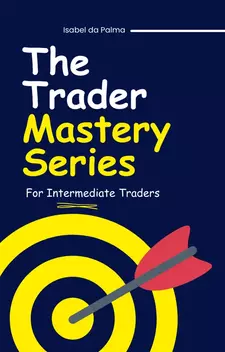The Ultimate Trading Guide: 59. Arbitrage
Arbitrage is a trading strategy that takes advantage of price discrepancies between different markets or financial instruments. It involves simultaneously buying and selling an asset to profit from the difference in prices. This strategy is fundamental to the efficiency of financial markets, as it helps align prices across different venues. This chapter from The Ultimate Trading Guide explores the concept of arbitrage, its different forms, and includes a case study to illustrate its practical application.
Understanding Arbitrage
Arbitrage is the process of buying and selling the same asset simultaneously in different markets to profit from differences in its price. The key to successful arbitrage is the ability to execute trades quickly and efficiently, as price discrepancies are often small and short-lived.
Key Characteristics of Arbitrage:
1. Simultaneous Transactions: Arbitrage involves buying and selling an
asset at the same time to lock in a risk-free profit.
2. Price Discrepancies: The strategy capitalizes on price differences
between two or more markets or instruments.
3. Low Risk: Arbitrage is considered low risk because it involves a
hedged position, minimizing exposure to market fluctuations.
4. Speed and Efficiency: Successful arbitrage requires rapid execution
to take advantage of fleeting price discrepancies.
Types of Arbitrage
There are several types of arbitrage strategies that traders can employ, each targeting different markets or instruments:
1. Spatial Arbitrage:
- Definition: Exploits price differences between the same asset in different geographic locations.
- Example: Buying gold in London where it's cheaper and selling it in New York where it's more expensive.
2. Temporal Arbitrage:
- Definition: Takes advantage of price differences over time within the same market.
- Example: Buying a stock after hours when the price is lower and selling it during market hours when the price rises.
3. Triangular Arbitrage:
- Definition: Involves three currencies and takes advantage of discrepancies in the exchange rates between them.
- Example: Converting USD to EUR, EUR to GBP, and GBP back to USD to profit from inconsistent exchange rates.
4. Statistical Arbitrage:
- Definition: Uses statistical models to identify price discrepancies based on historical data and mean reversion.
- Example: Trading pairs of correlated stocks that deviate from their historical price relationship.
5. Risk Arbitrage (Merger Arbitrage):
- Definition: Involves buying shares of a company being acquired and shorting the shares of the acquiring company.
- Example: Buying shares of Company A and shorting shares of Company B when Company B announces it will acquire Company A.
6. Convertible Arbitrage:
- Definition: Involves buying convertible securities (such as convertible bonds) and hedging by shorting the underlying stock.
- Example: Purchasing a convertible bond and shorting the stock it can be converted into to profit from pricing inefficiencies.
The Role of Technology in Arbitrage
Modern arbitrage strategies heavily rely on technology for execution. High-frequency trading (HFT) platforms and algorithms are designed to detect and exploit price discrepancies in real time. These systems can analyze vast amounts of data across multiple markets and execute trades within milliseconds, making them essential for successful arbitrage.
Technological Tools for Arbitrage:
- Algorithmic Trading: Uses pre-programmed instructions to execute trades based on specific criteria, allowing for rapid and efficient arbitrage.
- Direct Market Access (DMA): Provides traders with direct access to market exchanges, enabling faster execution of arbitrage trades.
- Trading Platforms: Sophisticated trading platforms offer real-time data and advanced analytics to identify and exploit arbitrage opportunities.
- Automated Trading Systems: Fully automated systems can execute arbitrage strategies without human intervention, increasing speed and accuracy.
Case Study: Triangular Arbitrage in Forex Trading
To illustrate the practical application of arbitrage, let’s consider a
hypothetical case study of a forex trader named David.
Trader Profile: David is an experienced forex trader who specializes in
currency pairs. He uses advanced algorithmic
trading systems to identify
and execute arbitrage opportunities in the forex market.
Market Scenario: In July 2024, David identifies a triangular arbitrage opportunity involving the USD, EUR, and GBP currency pairs. He notices inconsistencies in the exchange rates quoted by different forex brokers.
Arbitrage Setup:
1. Exchange Rates:
- Broker A: USD/EUR = 0.85
- Broker B: EUR/GBP = 0.90
- Broker C: GBP/USD = 1.25
2. Initial Capital:
- David starts with $100,000 USD.
Arbitrage Calculation:
1. Convert USD to EUR:
- Amount: $100,000
- Exchange Rate (USD/EUR): 0.85
- EUR Received: $100,000 * 0.85 = €85,000
2. Convert EUR to GBP:
- Amount: €85,000
- Exchange Rate (EUR/GBP): 0.90
- GBP Received: €85,000 * 0.90 = £76,500
3. Convert GBP to USD:
- Amount: £76,500
- Exchange Rate (GBP/USD): 1.25
- USD Received: £76,500 * 1.25 = $95,625
Profit Calculation:
- Initial USD: $100,000
- Final USD: $95,625
- Loss: $100,000 - $95,625 = $4,375
Outcome:
- David realizes that due to transaction costs, spreads, and the speed at which prices adjust, the arbitrage opportunity is not profitable in this instance.
- He learns the importance of considering all factors, including fees and latency, when executing arbitrage trades.
Post-Trade Analysis:
- David reviews his trading algorithms and adjusts them to factor in transaction costs and potential delays in execution.
- He continues to monitor the forex market for new arbitrage opportunities and refines his strategy to improve profitability.
Final Remarks
Arbitrage is a sophisticated trading strategy that involves exploiting price differences between markets or financial instruments. While it is considered low risk due to the simultaneous buying and selling of assets, successful arbitrage requires rapid execution and careful consideration of transaction costs and market conditions.
Understanding the different types of arbitrage, such as spatial, temporal, triangular, statistical, risk, and convertible arbitrage, allows traders to identify and capitalize on various opportunities. The role of technology, including algorithmic trading, direct market access, and automated trading systems, is crucial in executing arbitrage strategies efficiently.
The case study of David illustrates the complexities of triangular arbitrage in the forex market. Despite identifying a potential arbitrage opportunity, David's experience highlights the importance of factoring in transaction costs and execution speed to determine the true profitability of the trade.
As part of The Ultimate Trading Guide, this chapter emphasizes the need for traders to be vigilant, adaptable, and technologically proficient to successfully exploit arbitrage opportunities. By continuously refining their strategies and leveraging advanced tools, traders can enhance their ability to capitalize on price discrepancies and achieve long-term success in the financial markets.




